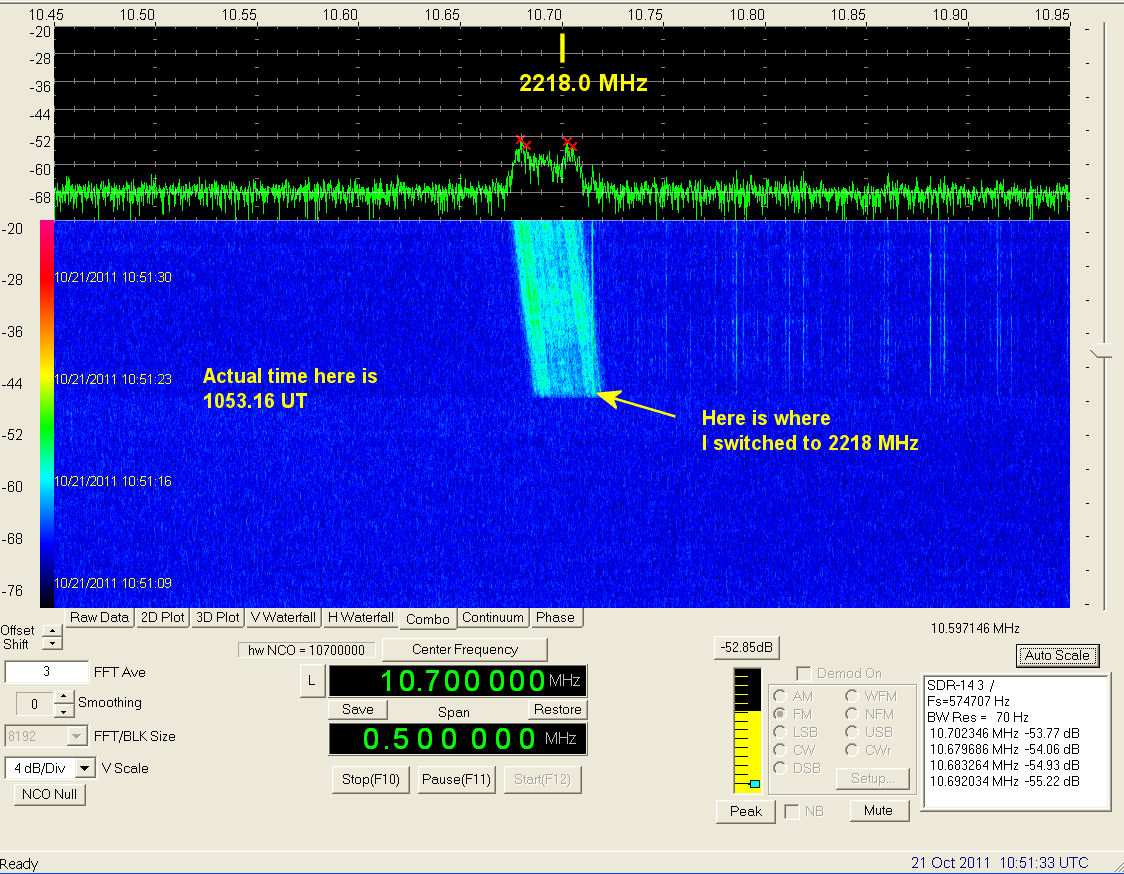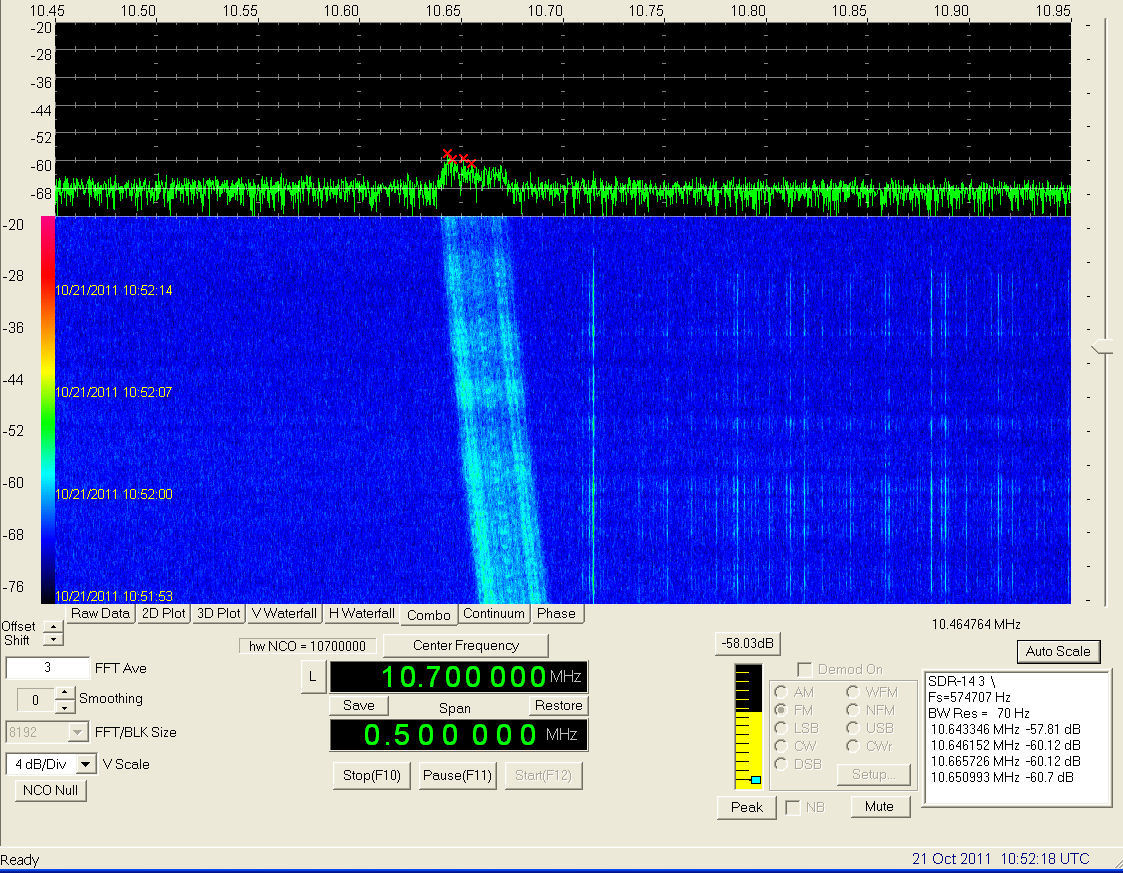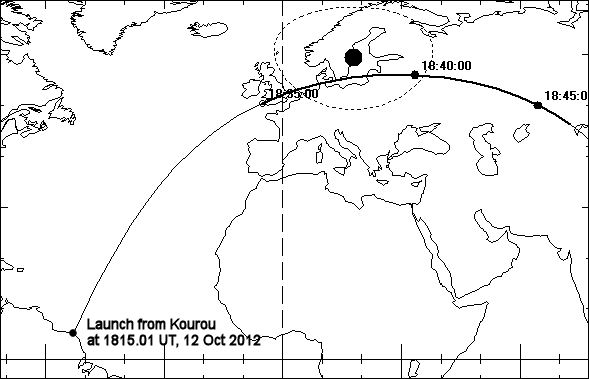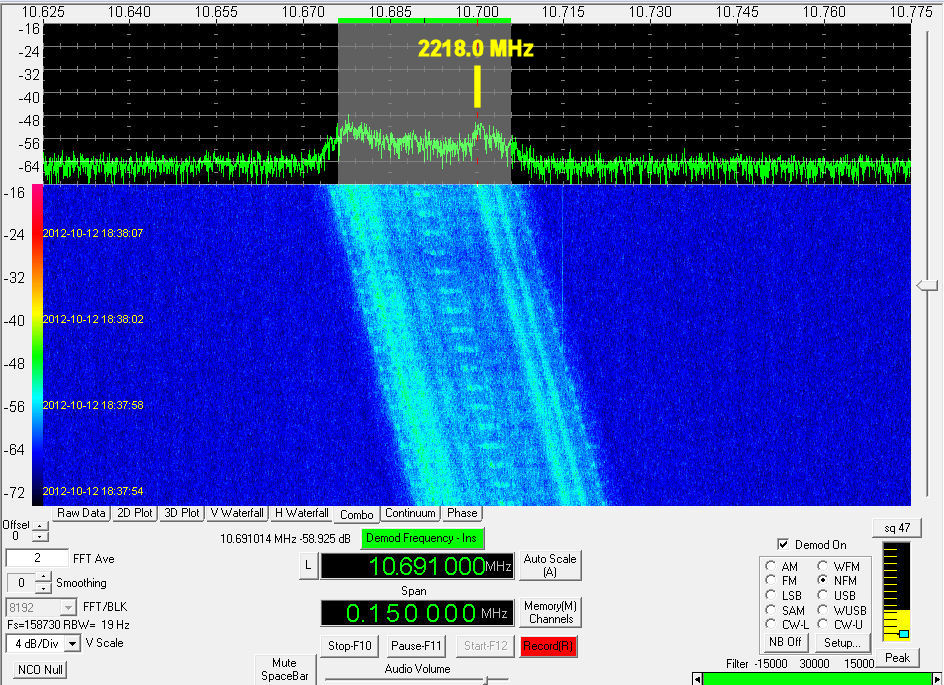
Sven Grahn
I found the frequencies for the Fregat stage for Soyuzes out of French Guiana by consulting Starsem's manual for the rocket available on-line. It gave two numbers: 2218.0 MHz and 2227.0 MHz. I toggled between the two frequencies. The launch took place at 1030.26 UT on 21 October 2011. I toggled between the two frequencies every 5 seconds or so. As I switched to 2218.0 MHz at 1053.16 UT the strong signal was there - see the waterfall spectrum below. I used my vertical 3.5-turn helix as usual.

I captured one more good waterfall spectrum before the signal faded out about 1056 UT: The vertical straight lines are interference.

The rocket with the second batch of Galileo test satellites took off from Kourou at 1815:01 UT on 12 October 2012. This time I had changed the bandwidth of the spectrum display to 150 KHz to be able to see details of the signal spectrum. Very strong signals appeared on 2218.0 MHz at 1835:58-1839:04 UT. As usual I used the 3.5-turn vertically oriented helix to receive the signals. The map below shows the approximate ground track. The maximum elevation during my reception was probably about 45°. The Fregat upper stage nominally ignited 10 minutes 24 sec after launch, i.e. at 1825:25 UT. Its first shutdown occurred 23 in 31 sec after launch, at 1838:32 UT, i.e. during my reception. The vehicle was observed visually by Nils von Storch from the Netherlands and I too should have been able to see it fly by under propulsion - if I had only thought about it! That is also the reason for the inaccuracy of the map below - the vehicle was under rocket power.

The FM demodulator was switched on during this reception and also recording of the sound. The signal bandwidth was about 30 kHz.

![]()